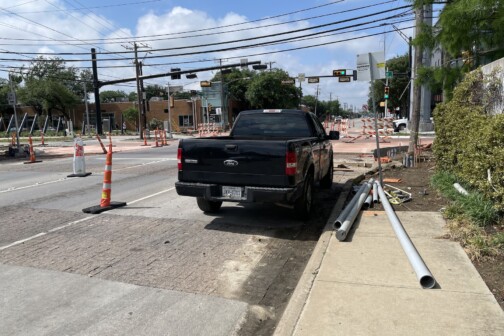The politics of public money have become complex indeed. There was a time in Dallas when bond programs were whisked by the body politic and perfunctorily approved like so many requisitions for new jeeps passing the desk of an Army clerk. But in the Age of Nixonomics, that horrifying troika of double-digit inflation, climbing unemployment and slumping production (coupled with public disgust at New York City’s economic self-destruction) have, as they say in politics, aroused the sleeping bear.
Clearly, in the case of the $149.8 million city bond program, some innovative salesmanship is in order.
The City Council, for its part, has shown more political acumen in packaging this year’s bond request than it has since it elected Adlene Harrison deputy mayor pro tern. First, they trimmed and trussed the bond packet specifically to avoid a tax increase, well aware that municipal taxpayers are not yet over the sting of a two-cent general city tax increase earlier this year. Second, council members shaved down, or entirely out, a number of pie-in-the-sky projects, understanding that it’s a little difficult to ask taxpayers to invest in dreams when many of them are having trouble affording reality.
For example, the council wisely de-leted the proposed Town Lake altogether; inclusion of such a long-term and expensive civic dream in a year like this would have jeopardized not only the entire bond package, but also the future passage of the city lake project. Nearly $1 million in funds to purchase, construct or renovate areas downtown was sliced off to give the program, as bond committee chairman Forrest Smith puts it, “a more positive, tangible look.” Two million earmarked for parks and recreation improvements that could wait, and another million in requests for city libraries were also lopped off.
This resulted in a believable package of requests for money to expand or improve basic services such as fire protection, streets, storm and flood protection, solid waste disposal and recreation, combined with funds for key short-term projects calculated to aggrandize various areas of the city.
Included in the parks and recreation requests are:
■ expansion of White Rock Creek Greenbelt, the project aimed at eventually encircling the entire city with loosely-related green spaces;
■ expansion of the cramped MarsalisZoo;
■ 48 new tennis court
three new community recreation centers;
■ a new public golf course;
continuation of greening of downtown;
■ purchase of 43 acres (including themansion) of the beautiful De Golyerestate near White Rock Lake, for future conversion into “White RockWoods,” an envisioned botanic garden and arboretum.
Major street projects include:
■ $1.7million for purchase of right-of-way for the Abrams Road bypass asLakewood Shopping Center considered a key first step in renovatingthe old center, as well as the entireLakewood neighborhood;
■ $1.9 million for design and /or construction of pedestrian malls in theCentral Business District, includingthe West End Historical District, extension of Akard Street Mall andcommencement of Main Street Mall(as with the Abrams bypass, mostdesigners agree creation of such pedestrian malls is a bottom line mustfor revitalization of downtown);
■ $4.5 million for widening and expansion of San Jacinto from Har-wood to Akard, creating a new gateway from the highways to downtown(many urban planners worry thatDallas has strangled its downtowncore with encircling highways; the San Jacinto access is calculated to give the CBD a little air).
Also included are $600,000 to improve the already degenerating convention center, $350,000 for land acquisition and design of a municipal produce market downtown and $450,000 for a new animal care center.
Perhaps the most suspicious request in the bond package is $230,000 for design of a proposed downtown performing arts center. Not only does this not jibe with the overall lean profile of the program, but some environmentalists and urban planners worry pursuit of a downtown performing arts center will once and for all render Fair Park useless to the middle class of this city.
Forrest Smith says the thrust of the sales pitch on the bond program will be that it will require no new taxes. This is true in the technical sense, but isn’t it also true that capital improvements – land acquisition, design and construction of new facilities – are bound to pressure the operating budget at some time in the future?
“That’s a good point,” says assistantcity manager Dan Petty. “But itworks both ways with capital improvements. Some do have an eventual impact on the operating budget. Butothers, like renovation of traffic lights,which in years past have required constant maintanence at enormous cost,and improved and more efficient solidwaste disposal and sewage programs,eventually save the city money. It’s atrade-out situation.”
Get our weekly recap
Brings new meaning to the phrase Sunday Funday. No spam, ever.
Related Articles

Healthcare
Steward Health Files for Bankruptcy
Steward CEO Dr. Ralph de la Torre blamed government payers and other factors for the financial duress. The system owes top creditors $600 million.
By Will Maddox

Urbanism
Dallas: The City That Hates Pedestrians, Pt. 51
At some point, Hi Line Drive will be an important connecting point between the Katy Trail and the Trinity River. Until construction is finished, maybe just stay in your car.
By Matt Goodman

Shopping & Fashion
‘That’s a Big Ass Candle’
Chloe and Trent Mervine want their ginormous candle to be the only one you need this year.


